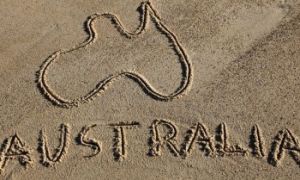

Here are some ways to dye pasta, whether for crafts, sensory play, or even naturally coloured edible pasta.
Educator burnout in early childhood services is a serious issue, but there are ways to manage and prevent it. The following article provides information on What Is Burnout?, What Workplace Adjustments Can Help Reduce Burnout, Strategies On Dealing With Educator Burnout and more.
Getting little ones to wear a jumper in cold weather can be a challenge, but making it fun and relatable can help! The following article provides Startegies On Encourage Children To Wear A Jumper Outside When It's Cold During Play, What Are Some Specific Examples Of Games To Encourage Wearing Jumpers?, What Are Some General Strategies To Encourage Children To Wear Warm Clothing?, Will A Child Get Sick If They Don't Wear A Jumper On A Cold Day and more.
The following article provides a list of 25 creative team project ideas designed to engage early childhood educators in a meaningful, hands-on way.
Cold weather play is incredibly beneficial for early childhood development! It helps children build resilience, strengthen their immune systems, and develop essential motor skills. Here’s why outdoor play in winter is important.
The "100 Languages of Children" is a concept from the Reggio Emilia Approach, an educational philosophy that emphasizes children's diverse ways of expressing themselves and learning. This approach encourages children to explore their creativity, curiosity, and individuality through various mediums, fostering a deeper understanding of the world around them.
The following article describes the actions to take if you think a child or a staff member is sick or if a notifiable disease occurs in the education and care service; it includes information on Watching For Symptoms In Children, Identifying Severe Sickness, What To Do If A Child Seems Sick, Keeping Records and more.
Descriptive praise and appreciative praise are powerful tools for encouraging positive behavior and fostering intrinsic motivation in children. The following article provides information on Descriptive Praise, Appreciative Praise, Examples and more.
Actively managing waste in an early learning service is essential for sustainability, cost efficiency, and environmental responsibility. Here are some effective strategies to implement waste management:
Creating a warm and inviting space in a pack-up, pack-down setting can be challenging, but with a few thoughtful touches, you can transform the environment into a welcoming and engaging space for children and families. Here are some tips and tricks to enhance the atmosphere:
 Here is the list of the EYLF Learning Outcomes that you can use as a guide or reference for your documentation and planning. The EYLF… Read More
Here is the list of the EYLF Learning Outcomes that you can use as a guide or reference for your documentation and planning. The EYLF… Read More
 The EYLF is a guide which consists of Principles, Practices and 5 main Learning Outcomes along with each of their sub outcomes, based on identity,… Read More
The EYLF is a guide which consists of Principles, Practices and 5 main Learning Outcomes along with each of their sub outcomes, based on identity,… Read More
 This is a guide on How to Write a Learning Story. It provides information on What Is A Learning Story, Writing A Learning Story, Sample… Read More
This is a guide on How to Write a Learning Story. It provides information on What Is A Learning Story, Writing A Learning Story, Sample… Read More
 One of the most important types of documentation methods that educators needs to be familiar with are “observations”. Observations are crucial for all early childhood… Read More
One of the most important types of documentation methods that educators needs to be familiar with are “observations”. Observations are crucial for all early childhood… Read More
 To support children achieve learning outcomes from the EYLF Framework, the following list gives educators examples of how to promote children's learning in each individual… Read More
To support children achieve learning outcomes from the EYLF Framework, the following list gives educators examples of how to promote children's learning in each individual… Read More
 Reflective practice is learning from everyday situations and issues and concerns that arise which form part of our daily routine while working in an early… Read More
Reflective practice is learning from everyday situations and issues and concerns that arise which form part of our daily routine while working in an early… Read More
 Within Australia, Programming and Planning is reflected and supported by the Early Years Learning Framework. Educators within early childhood settings, use the EYLF to guide… Read More
Within Australia, Programming and Planning is reflected and supported by the Early Years Learning Framework. Educators within early childhood settings, use the EYLF to guide… Read More
 When observing children, it's important that we use a range of different observation methods from running records, learning stories to photographs and work samples. Using… Read More
When observing children, it's important that we use a range of different observation methods from running records, learning stories to photographs and work samples. Using… Read More
 This is a guide for educators on what to observe under each sub learning outcome from the EYLF Framework, when a child is engaged in… Read More
This is a guide for educators on what to observe under each sub learning outcome from the EYLF Framework, when a child is engaged in… Read More
 The Early Years Learning Framework describes the curriculum as “all the interactions, experiences, activities, routines and events, planned and unplanned, that occur in an environment… Read More
The Early Years Learning Framework describes the curriculum as “all the interactions, experiences, activities, routines and events, planned and unplanned, that occur in an environment… Read More

Creating open-ended observations in early childhood settings is all about capturing the richness of a...
See more...
Writing a personal philosophy is a great way for others to read what your values...
See more...
On 26 January we celebrate Australia Day. The following provides a list of activities and free...
See more...© 2009-2025 Aussie Childcare Network Pty Ltd. All Rights Reserved.
